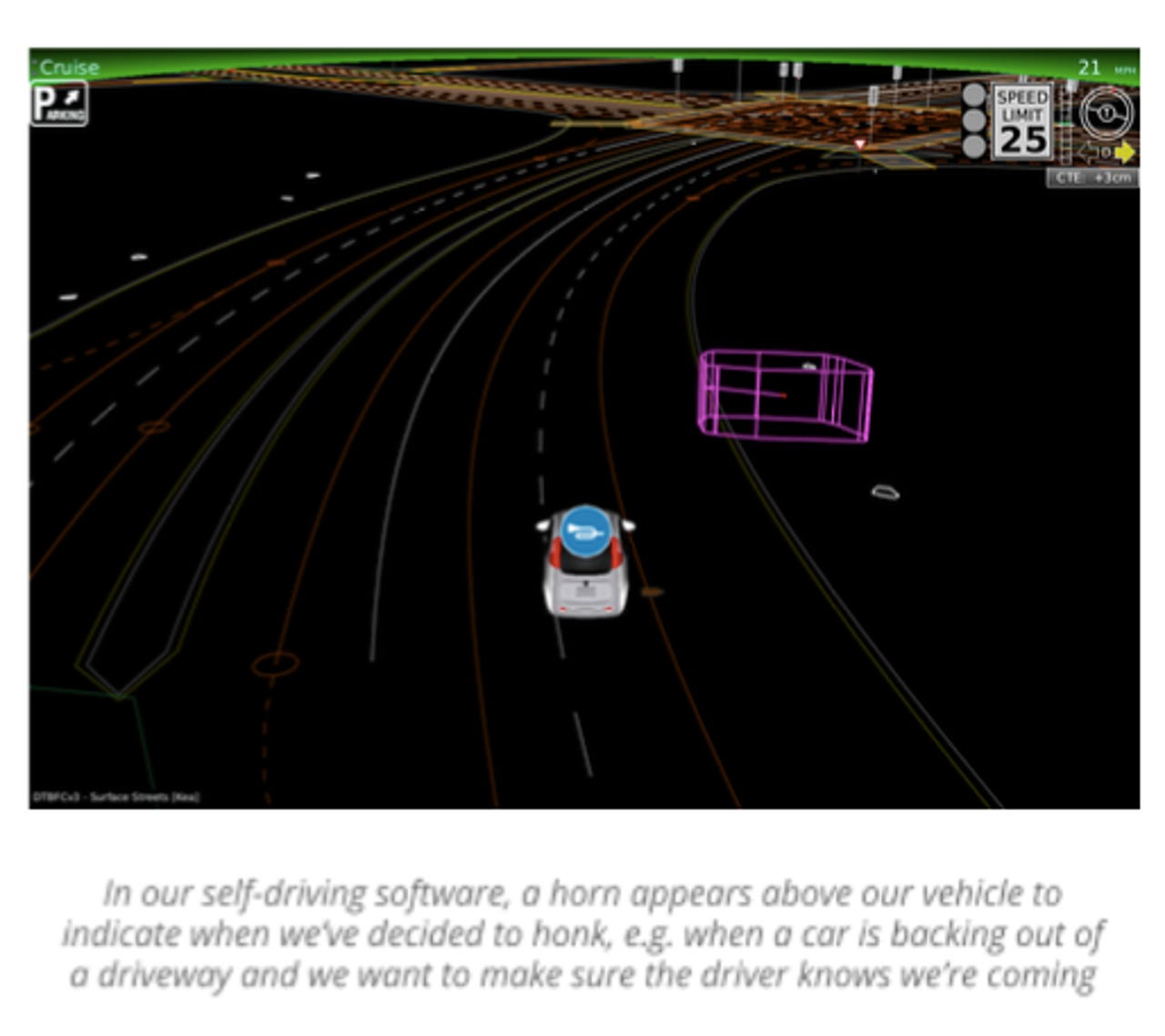Honking like a human: Google's self-driving cars learn to blow their own horn


Google has developed algorithms to tell its vehicles when to use the horn.
For some time Google's self-driving vehicles have been honking discreetly to their occupants in risky situations. But now that Google is satisfied with its "honking algorithms", the cars will honk out loud to other road users when they judge that a toot will make a situation safer.
Google details its honking experiments in the May 2016 report on its self-driving cars, where it presents updates on progress it's made in different aspects of driving, such as how the vehicles have been taught to handle bad weather conditions.
The May report focuses on sound and how it can be used to communicate with other road users, -- including drivers, cyclists, and pedestrians -- in different scenarios.
According to Google, the vehicles have now been trained to "honk like a patient, seasoned driver" and "only honk when it makes driving safer for everyone".
The vehicles have even been taught to adapt honks to different situations. For example, in an urgent situation, such as a vehicle swerving towards the self-driving car, it will blow one long honk. But if a vehicle appears to be slowly backing into it, the car will give "two short, quieter pips".
"During testing, we taught our vehicles to distinguish between potentially tricky situations and false positives, ie, the difference between a car facing the wrong way during a three-point turn, and one that's about to drive down the wrong side of the road," Google says.
Just as Google consistently highlights that its vehicles are safer drivers than humans, it suggests they will also be better, more polite users of the horn than humans too.
The next phase of research will look at how to predict the response of other drivers to its vehicles' use of the horn.
Google is also employing a new humming sound for its electric vehicles, which are quieter than traditional combustion-engine vehicles. Google says it has previously used the sound of an orca to create a noise for its vehicles, but now it is now adding pitch to the signal when they speed up or slow down.
"Our prototype mimics the sound characteristics of traditional cars, such as increasing the pitch when it accelerates, and decreasing the pitch when it decelerates," Google explains.
The purpose of the new pitch feature is to let pedestrians and cyclists know what to expect from the vehicle.
Google noted one only incident in May involving one of its vehicles, which happened at a low speed and when it was in manual mode.